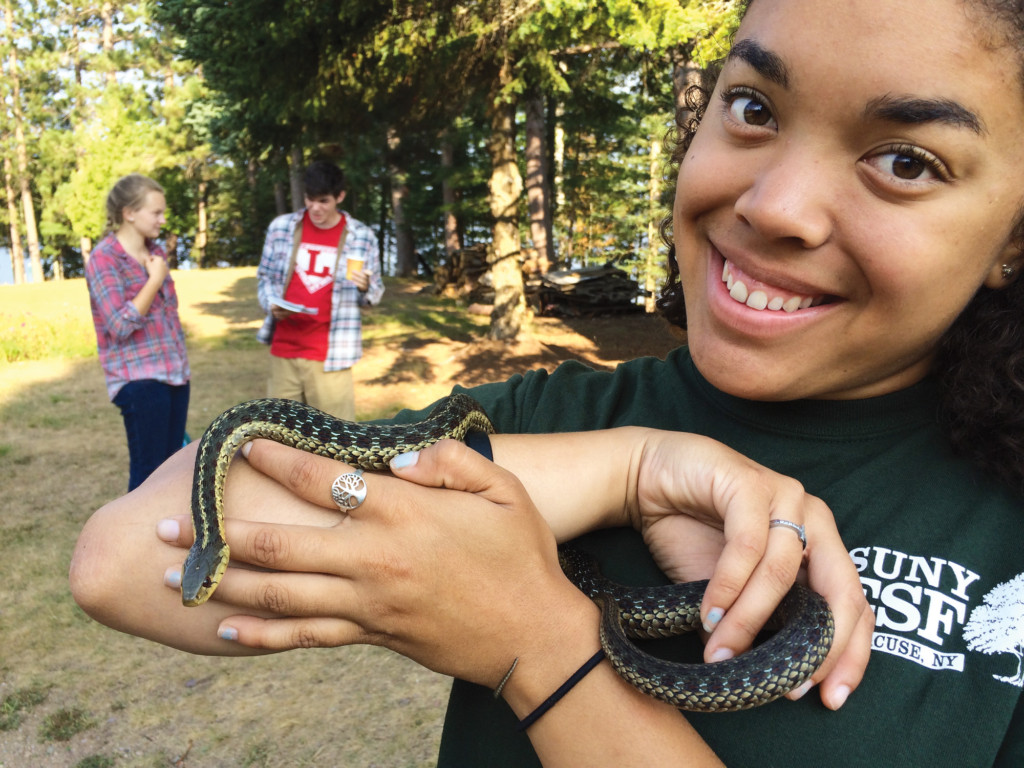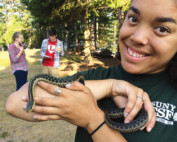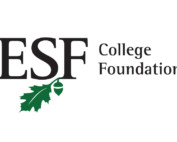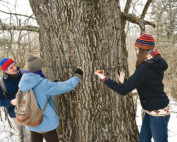Lewis holds an Eastern garter snake she found during her summer at the Cranberry Lake Biological Station.
Jet’aime “Jet” Lewis is not one to shy away from an opportunity for involvement.
She listed her current activities at ESF: chief communications officer in the Undergraduate Student Association, officer in the pre-vet club, resident adviser in Centennial Hall, researcher in Dr. Christopher Whipps’ wildlife studies lab and assistant in the sustainability office.
“That’s it for right now,” she said.
Lewis is a sophomore environmental biology major from Murrieta, California. She discovered ESF when she received a publication from the College in the mail. After looking at all of her options, Lewis chose to leave the West Coast behind and attend ESF because she liked the close-knit feel of the campus and felt there was room for her to grow within the field of biology.
Lewis also liked ESF because it was the least expensive school on her list. She was the recipient of a National Scholarship from ESF. She said this helped to relieve some of the financial burden of going to college and keeps her motivated.
“It’s made a difference in making sure that I try to be especially on top of my grades since there is a minimum GPA requirement to keep the award,” Lewis said.
Lewis was in a general biology II lecture her freshman year when she learned her professor, Whipps, did research in a genetics lab. It sparked her interest, so she approached him and was an apprentice in his lab during the end of her freshman year. She has been doing research during her sophomore year on a project that tracks how pathogens transfer from biofilms and micro-bacteria to organisms, and how fish are affected. She said the research is opening her eyes to more possibilities. Lewis had planned on attending veterinary school, but because of the research she is doing, she is leaning toward getting her Ph.D. instead.
Lewis hopes her activities will culminate in a career in wildlife rehabilitation, working with endangered species. She is interested in working for nonprofits such as the World Wildlife Fund or National Geographic, and focuses on networking with ESF professors to connect her with people who work in the field.
“The professors and the faculty that are here are some of the best resources that I have, and I go to them more than my friends sometimes,” she said. “They have so much knowledge — they’re just like a vault of information and possibility.”






